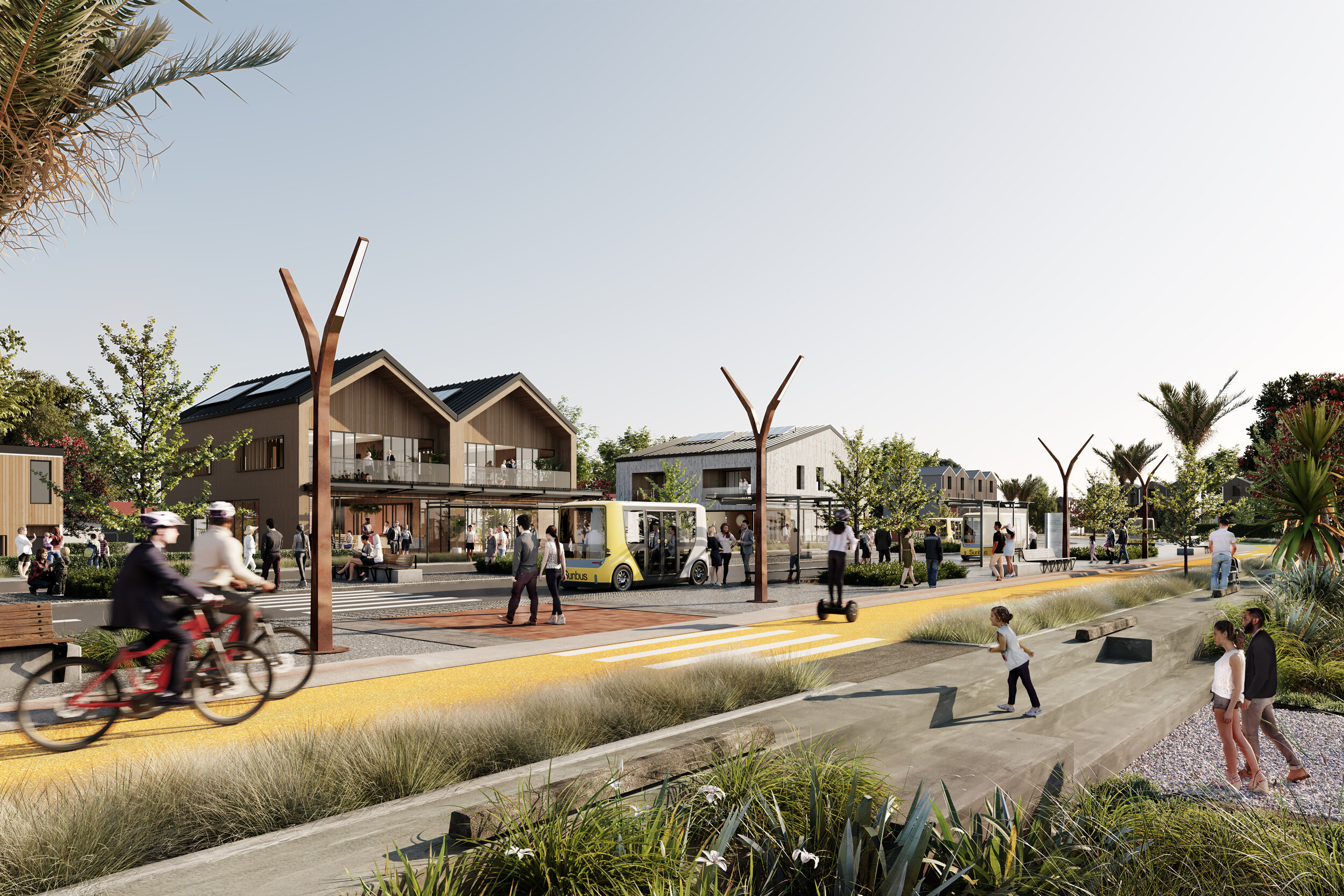Sunfield housing development - a car-less way of living
Waka Kotahi’s dumping of a major roading infrastructure project in South Auckland was the catalyst for a “radical new” approach to living in the latest Winton housing development. Studio Pacific principal Stuart Dun says what began as a more traditional housing project is now a car-less, solar powered neighbourhood that prioritises people and community, thanks to the scrapping of plans to build a major arterial route through the site.
Dun’s talking about Sunfield, a 5000-home development proposed for Papakura. It’s designed around the 15 minute neighbourhood principle and is currently in front of the Government for approval under the Urban Development Act - fast-track legislation created to speed up major housing developments.
A map of the Sunfield development in Papakura, Auckland.
Studio Pacific masterplanned the project and Dun says the most exciting challenge was how to rethink a neighbourhood without traditional roading infrastructure.
“People are looking for alternative lifestyles,” says Dun. “In Auckland you can spend an hour and a half in each direction commuting to work on a blocked up motorway. And it’s not going to get better. People are ready to look at other ways of living that remove that stress from the equation.”
If approved, Sunfield will be just over two kilometres from Papakura Train Station. “That link to public transport, and providing a really efficient link from Sunfield to the train station is one of the key aspects of the development,” Dun says.
A neighbourhood park. Renders by @one_to_one_hundred.
In line with the sustainability principle that people should live within 15 minutes of their daily needs, Sunfield will have two schools, a town centre, four retail hubs, healthcare, aged-care facilities, 28 hectares of open space, and an employment precinct providing up to 11,000 job opportunities.
Because the whole development is built on the premise most people won’t have or need cars, houses won’t have garages or car pads. Nor will they have streets in front of them, just a small courtyard with shared pedestrian lanes.
But Dun says provision has been made for one in 10 households to be able to park a vehicle nearby. “Our focus was on car-less, acknowledging that to go totally car-free requires quite a different lens.”
The Sunfield loop road.
Running through the development will be a single loop road, allowing residents to catch an autonomous electric bus to other spots in the neighbourhood and to the train station.
Dun says the land is flat and will have good cycle connections. His team are also looking at “end of trip” facilities like secure bike parking, including off site at the train station.
The pandemic, he says, has forced many New Zealander’s to consider new ways of working, such as working remotely. To that end the four hubs will include communal work spaces for those who still need to plug into an office once or twice a week. But he points out its hoped that many will be able to find jobs in Sunfield, which is why such a big employment precinct has been included.
An example of a lane within the housing development.
All buildings in Sunfield will have solar panels and it is expected that the whole development can be powered in this way, through a distributed approach and local batteries in each of the hubs.
“The removal of cars opens up a whole new way of living in a neighbourhood,” says Dun. “We have a climate crisis and a housing crisis. People are thinking of connection back to their community and to the environment.
“I think other developers will definitely be looking more closely at these kinds of innovations as the public becomes more conscious about how they are living.”
Winton is funding all of Sunfield's development and infrastructure.



